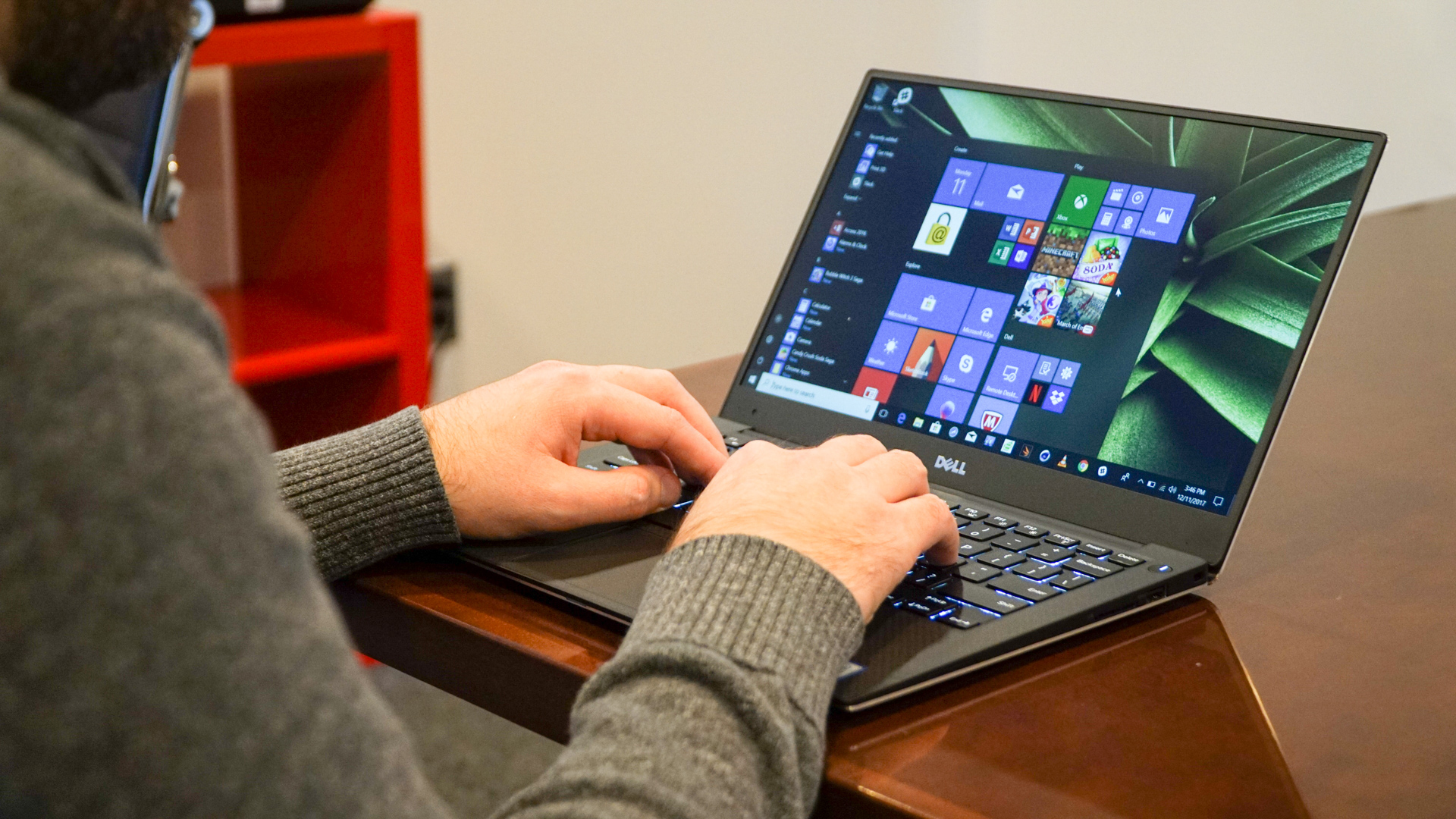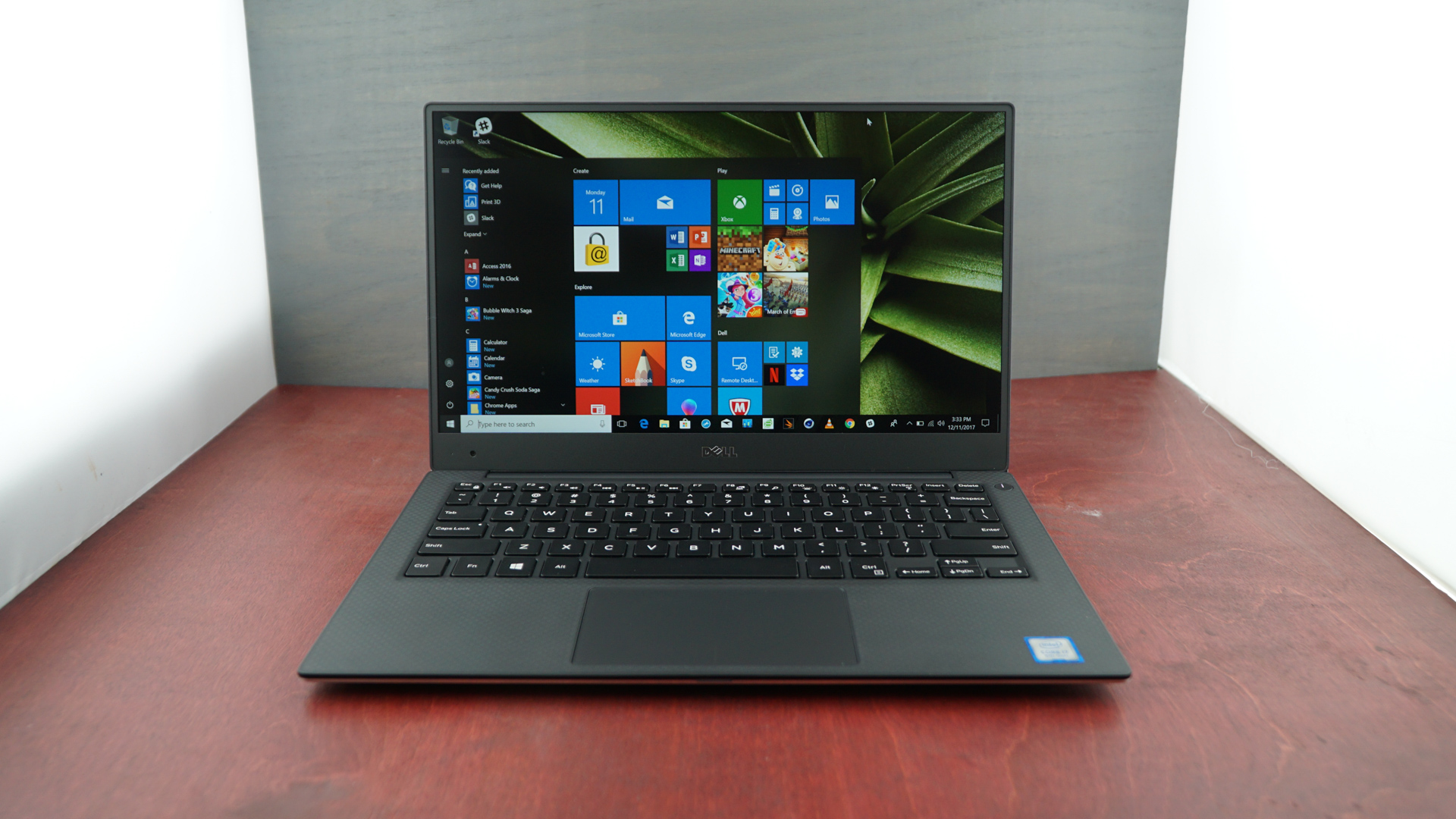TechRadar Verdict
The continuing marriage of panache, performance and price allows us to overlook minor design flaws and once again bestow the Dell XPS 13 with our Best in Class award.
Pros
- +
Incredible performance
- +
Amazing battery life
- +
Great value
- +
Lots of options
Cons
- -
Webcam orientation still a bother
- -
Poor speaker placement
Why you can trust TechRadar
This is a review of the 2017 Dell XPS 13 model. Click the following link to read our hands-on review of the very latest, 2018 Dell XPS 13.
For the third year in a row, the Dell XPS 13 is still our absolute favorite laptop. Seeing as it still looks the same as it did in years prior, you may be wondering what’s different about the 2017 version of the Dell XPS 13, the company’s flagship Ultrabook that we’ve still yet to fall out of love with all these years later.
Above all else, this update focuses on boosting specs. So while you’ll notice marginal changes made to the outside of the device, the inside now consists of Intel’s 8th-generation ‘Kaby Lake Refresh’ series processors, if you can afford them, for double the cores of the previous generation Dell XPS 13.
Of course, in directing its attention almost exclusively to performance enhancements this time around, the 2017 Dell XPS 13 still encounters some of the same issues we’ve been experiencing for quite some time now – particularly those related to webcam placement.

Here is the Dell XPS 13 configuration sent to TechRadar for review:
CPU: 1.8GHz Intel Core i7-8550U (quad-core, 8MB cache, up to 4.0GHz)
Graphics: Intel UHD Graphics 620
RAM: 8GB LPDDR3 (1,866MHz)
Screen: 13.3-inch FHD (1,920 x 1,080) InfinityEdge (400 nits; 1,200:1 contrast ratio)
Storage: 256GB PCIe SSD
Ports: 1 x USB 3.0, 1 x USB 3.0 w/PowerShare, 1 x USB-C 3.1 (Thunderbolt 3), SD card reader, 3.5mm audio jack
Connectivity: Killer 1535 802.11ac (2.4 & 5GHz); Bluetooth 4.1
Camera: 720p widescreen HD webcam with dual array digital microphones
Weight: 2.7 pounds (1.2kg)
Size: 11.98 x 7.88 x 0.33 – 0.6 inches (W x D x H) (304 x 200 x 9 – 15mm)
Price and availability
As we anticipated, the cost of the Dell XPS 13 hasn’t changed. The starting configuration retails at $799 in the US, and it doesn’t appear to be any different than last year. You’re still getting a 7th-generation Intel Core i3-7100U, 4GB of RAM and a 128GB solid-state drive (SSD) and a full HD InfinityEdge Screen.
The only models whose specs have changed are those that are higher tier. Because Intel’s 8th-generation processors for laptops only exist in a luxuriously high-speed vacuum, you can max out your Dell XPS 13 with an Intel Core i7-8550U, 16GB of RAM and 256GB of SSD storage for $1,749. The configuration we’ve tested here costs $1,299, £1,268.99 or AU$2,299.
(Pricier configurations include Windows Hello through a fingerprint sensor.)
Sign up for breaking news, reviews, opinion, top tech deals, and more.
In the UK, however, prices begin at £1,118.99 with a whopping 11 different configurations, starting with a 7th-generation Core i7 processor behind an FHD display as well as 8GB of RAM and a 256GB SSD. The top end sees the XPS 13 with a QHD+ touchscreen backed by an 8th-generation Intel Core i7 processor as well as 16GB of RAM and a 1TB SSD for a cool £1,818.98. (In the UK, you can also get several configurations pre-loaded with Ubuntu Linux instead of Windows 10.)
Finally, the Australian model starts at AU$799 for a 7th-generation Intel Core i5 processor behind an FHD panel and with 8GB of RAM and a 256GB SSD. At the highest end of its huge 10 configurations in the region, the XPS 13 costs AU$2,399 for a QHD+ display powered by an 8th-generation Intel Core i7 processor with 16GB of RAM and a 512GB SSD. The Rose Gold-colored model costs an extra AU$100 for the same innards.
For comparison’s sake, the 13-inch MacBook Pro starts the price discussion at $1,299, £1,249 or AU$1,899 for a 7th-generation Core i5 processor, 8GB of RAM and a 128GB SSD behind its 2,560 x 1,600 Retina display. Meanwhile, the Surface Laptop from Microsoft costs $999, £979 or AU$1,499 for a 2,256 x 1,504 PixelSense touchscreen backed by a 7th-generation Intel Core i5 processor with 4GB of RAM and a 128GB SSD.
For all intents and purposes, the XPS 13 seems to continue to present not only more options, but better value across the board than its highest-profile competitors.

Design
If you liked the look and feel of last year’s Dell XPS 13, then you’re in luck. If not, then this year’s rendition will do nothing to sway you. This is because absolutely nothing about the laptop’s dimensions, weight or frame design has changed.
The Dell XPS 13 is no thinner or lighter than before, at 2.9 pounds (1.29kg) for the glossy, QHD+ touchscreen model or 2.7 pounds (1.2kg) for the matte, FHD-screened version and at 0.6 inches (15mm) thick in either configuration.
Of course, the same gorgeous, machined aluminum lid and base that beset a comfy, carbon fiber keyboard deck coated in soft-touch paint are here – and in the expected Silver and Rose Gold colors, no less.
The keyboard and touchpad are just as sublime to use as they have been in years past. With deep-enough travel and punchy feedback, the keyboard remains among the best we’ve used on a laptop, while the glass-coated touchpad tracks gestures handily and offers strong palm rejection (which protects against accidental presses by your wrist when typing).
All told, we’re still taken by the XPS 13’s design, even if basically nothing was done for better or worse. All of the same ports feature in this model again, which is a major plus considering how comprehensive the set is. However, the 720p webcam – despite it working just fine – is still set to the bottom-left bezel of the display. Simply put, this is not great design and needs to be changed.

Display and sound
This time around, we’ve had the opportunity to test the FHD, or 1,920 x 1,080-resolution, version of the Dell XPS 13 InfinityEdge display. While QHD+ is a pleasure to work with, we find the FHD option to be just fine for what most folks will use the laptop for.
Color reproduction is still spot-on, and the matte coating versus the necessary glass for the QHD+ touchscreen actually works in its favor when under direct light, managing glare much more easily. Plus, the 400 nits worth of brightness works well to that end, too. Video still looks excellent on the laptop, but as for the sound, we’d appreciate an upgrade at this point.
You see, with just two, awfully-thin stereo speakers on each side of the laptop just above the point where the aluminum base and keyboard deck meet, only so much sound can get through. That leads to rather tinny audio despite strong volume, thanks to Waves MaxxAudio Pro tuning. While there’s a headphone jack, if there were top-firing speakers either beside or underneath the keyboard, that would go a long way to improving sound quality.
Still, despite these audio issues, we’d argue that the XPS 13 continues to make for a better professional or even ‘prosumer’ laptop than the 13-inch MacBook Pro. From the amount of configuration options to the ports on offer and the component quality versus the price, your mileage will vary far less with the XPS 13 than with Apple’s latest laptop.
First reviewed December 2017
- 1
- 2
Current page: Introduction, price, design and features
Next Page Performance, battery life and verdict
Joe Osborne is the Senior Technology Editor at Insider Inc. His role is to leads the technology coverage team for the Business Insider Shopping team, facilitating expert reviews, comprehensive buying guides, snap deals news and more. Previously, Joe was TechRadar's US computing editor, leading reviews of everything from gaming PCs to internal components and accessories. In his spare time, Joe is a renowned Dungeons and Dragons dungeon master – and arguably the nicest man in tech.
